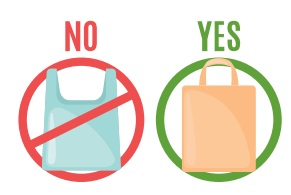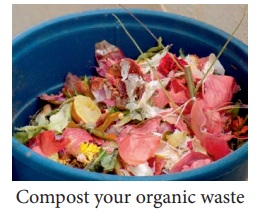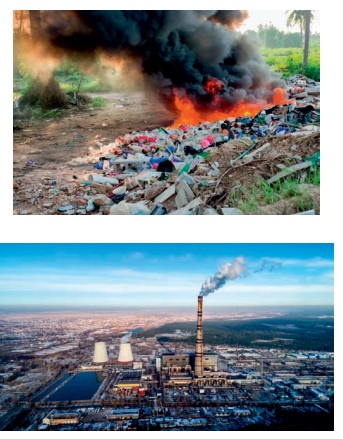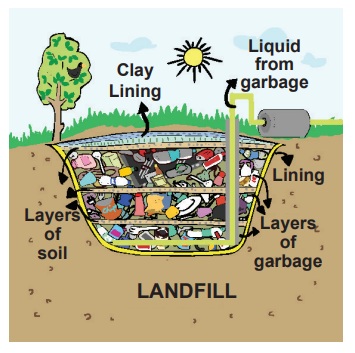Polymer Chemistry | Term 3 Unit 3 | 7th Science - Various methods of disposing plastics | 7th Science : Term 3 Unit 3 : Polymer Chemistry
Chapter: 7th Science : Term 3 Unit 3 : Polymer Chemistry
Various methods of disposing plastics
Various methods of disposing plastics
Plastics are everywhere! Our
increasing consumption and production of plastic waste needs a solution. Let us
find out more about how and where plastic waste is disposed of and the better
methods of disposing plastics.
Organic waste such as the peels of
vegetables, fruits and food remains can get broken down by bacteria in the soil
to create a rich source of nutrients in the form of compost. A material that
gets decomposed through natural processes and action by bacteria is called
biodegradable.
Plastics do not decompose by natural
processes and action of bacteria and are therefore not biodegradable. It is
important for us to separate our biodegradable and non-biodegradable waste and
dispose of them separately. A lot of the plastic produced globally is designed
to be used only once and thrown away, creating a large amount of plastic
waste. Plastic waste
ends up being recycled, incinerated, landfilled, dumped or ends up littering
our environment. It is estimated that from all the plastic waste ever produced,
79% is in landfills, dumps or in the environment, 12% has been incinerated and
only a small 9% is recycled.
Let us learn more about what happens
with the plastic waste. One way to look at plastic disposal is the 5R Principle
– Refuse, Reduce, Reuse, Recycle and Recover. We have already learned
about the waste pyramid and how the different methods of waste disposal can be
seen in terms of the best option to the least favourable in this order: Refuse
(Avoid), Reduce, Reuse, Recycle, Recover (Compost and Incinerate) and Landfill.
Refuse (Avoid)
The best thing to do is to avoid
using plastic products. One-time use throwaway plastics can often be avoided.
For example, we can carry cotton or jute bags when we go shopping and say no
when a shopkeeper offers us a plastic bag.

Reduce
Reducing the amount of plastic we
use is important. Before buying a plastic product we can check to see if there
are any substitutes or alternatives that can be used. If we use fewer plastics,
we will create less plastic waste. However, even if we try to reduce the amount
of plastics
we use and throw away, it is impossible to stop using plastics completely.
Reuse
If possible products made of
plastics can be used again and again. For example, if we have a plastic bag in
good condition, instead of throwing it away we can use it again the next time
we go for shopping. If we have a plastic product and if you do not feel like
using it again, we can give it to others instead of throwing it out.
Recycle
It
is better to recycle plastic waste. Separating plastic waste and making sure it
gets recycled is good as it turns waste materials into something new. Then it
will not be thrown away in landfills, open dumps or ending up as litter in the
environment. Many thermoplastics can be recycled. They can be softened by
heating and can be made into another article by recycling, but thermosetting
plastics cannot be recycled. Recycling of plastics is challenging and it is
important to know that plastics cannot be recycled forever. There are so many
different types of plastics, which are often mixed together making it difficult
to separate them back into the original material. Every time plastic is melted
and recycled it loses quality, this is called ‘downcycling’. Recycling of
plastic waste cannot be the only solution to plastic pollution.

Recover (Compost And Incinerate)
Solid waste can be converted into
resources such as electricity and compost through thermal and biological means.
Burning plastics in a large furnace or in the open is bad for the environment.
Open burning releases toxic
pollutants into the air and soil, which are harmful to our health, animals and
the environment. Burning plastics at high temperatures in incinerators and
trapping the gases and collecting the toxic ash is widely used to produce
energy. This is often seen as a positive way to deal with plastic waste.
However, burning plastics releases super toxic gases, and the remaining ash
contains toxic chemicals and heavy metals. Burning of plastics is not a good
solution, as we end up wasting non-renewable resources and produce super toxic
chemicals that are difficult to store or dispose safely.

Compost
your organic waste
Open burning and incineration

Landfill
Plastic waste often ends up in
landfills that are huge holes where waste is buried to keep it separate from
the environment. This is the most common way for plastics to be disposed of
around the world. Plastics make up 7-13% of waste that is sent to landfills on
a global scale. Plastics in landfills can still lead to pollution of the air,
soil and groundwater. Over time landfills can degrade, and the toxic chemicals
in certain plastics can leak out into the environment.

Related Topics